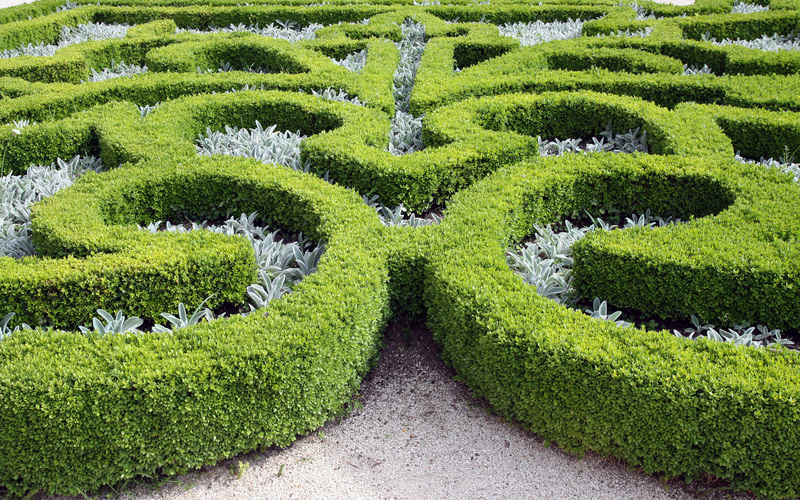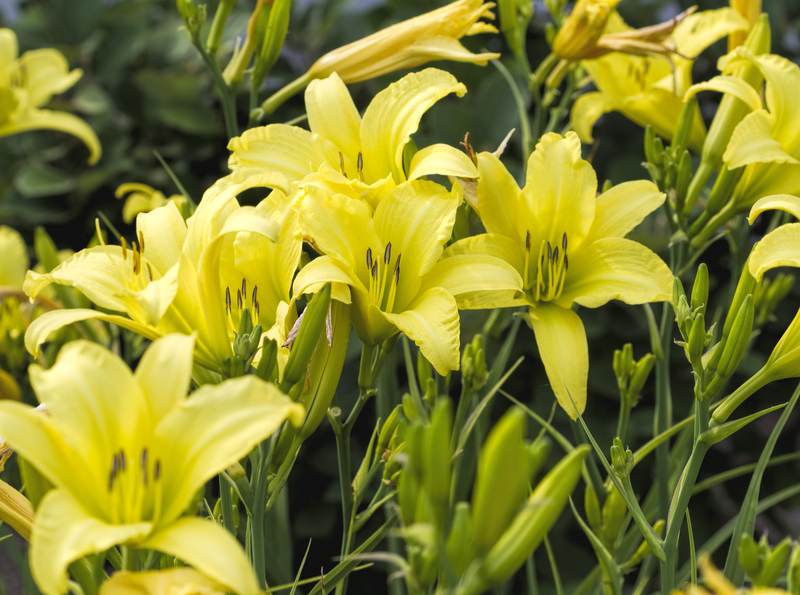Sowing Seeds and Sharing Spaces: Gardening While Embracing Dogs
Posted on 18/08/2025
Sowing Seeds and Sharing Spaces: Gardening While Embracing Dogs
Gardening can be a deeply rewarding activity, offering both beauty and sustenance. For those who share their homes and gardens with dogs, finding harmony between sowing seeds and sharing spaces requires thoughtful planning, creativity, and dog-friendly practices. Gardening with dogs presents unique challenges and joyful surprises, offering the chance to create a flourishing outdoor sanctuary for plants, people, and pets alike. This comprehensive guide explores how to enjoy gardening while embracing dogs, ensuring both your landscape and your canine companion thrive together.

Understanding the Relationship Between Dogs and Gardens
Building a dog-friendly garden is not just about protecting your plants. It's about integrating your pet's needs into your outdoor space, so that both your garden and your dog's happiness grow. Whether you're just starting your garden or want to adapt an existing yard, anticipating how dogs will interact with the landscape is key.
Why Dogs Love to Explore Gardens
- Dogs are natural explorers--gardens stimulate their senses with new smells, textures, and sights.
- Soft soil, mulch, and shaded areas offer irresistible opportunities to dig, play, or rest.
- Gardens are exciting spaces for both exercise and relaxation for dogs of all ages.
Successful gardening while sharing spaces with dogs requires balancing their curiosity with your horticultural ambitions. With patience and planning, your dog can become a respectful member of your gardening adventures.
Planning Your Dog-Friendly Garden
Creating a harmonious outdoor environment means designing a garden that considers both plant growth and canine behavior. Start by thinking about your dog's personality, energy level, and habits. Is your dog a digger? A chewer? Does she love to bask in the sun or search for shady retreats? Observing your pet will inform the best layout for your shared space.
Key Considerations for Garden Design
- Safe Zones: Designate dig-proof or dog-safe zones where your dog can play, rest, or dig without harming your favorite flower beds.
- Paths and Trails: Dogs often create natural paths through frequent use. Incorporate winding pathways from dog-friendly garden materials like pea gravel, mulch, or flagstone to guide canine traffic.
- Fencing and Borders: Use low fences, raised beds, or thick plantings to protect delicate areas and guide your dog away from vulnerable sections.
- Shade and Shelter: Provide shaded spots with trees, shrubs, or pergolas for your dog to rest during hot days.
- Water Source: Ensure dogs have access to clean, fresh water when enjoying the garden.
Choosing Dog-Safe Plants
Pet-friendly gardening starts with plant selection. Not all beautiful blooms or lush greenery are safe for dogs. Some common garden plants can be toxic or irritating if chewed, licked, or dug up. The most important step in dog-safe gardening is choosing non-toxic, hardy species for your landscape.
Popular Dog-Safe Plants
- Marigolds (Tagetes): Bright, easy to grow, and non-toxic to dogs.
- Sunflowers (Helianthus): Cheerful, non-toxic, and great for attracting pollinators.
- Sage (Salvia officinalis): Aromatic, edible, and safe for pets in moderation.
- Basil, Thyme & Rosemary: Excellent choices for kitchen gardens; flavorful and non-toxic.
- Snapdragons (Antirrhinum): Provide color and are generally safe for dogs.
- Fuchsias: Their dangling flowers are decorative and harmless.
Avoid planting any species from the following list, as they pose risks to canine health:
- Oleander, Foxglove, Azalea, Sago Palm
- Autumn Crocus, Larkspur, Lily of the Valley
- Daffodils, Tulips (bulbs), Hydrangea
- Grapes (and grapevines), English Ivy, Yew
For a comprehensive list of toxic and non-toxic plants, the ASPCA Plant List is an excellent online resource for gardening while embracing dogs.
Managing Mulch and Ground Covers
Mulch is a gardener's ally for moisture retention and weed control, but not all mulches are safe for pets. Cocoa mulch smells sweet but is highly toxic to dogs, much like chocolate. Instead, choose dog-friendly mulch options:
Best Mulch Choices for Dog-Friendly Gardens
- Cedar: Aromatic and bug-resistant.
- Pine: Common, affordable, and less likely to upset dogs' stomachs if ingested.
- Rubber mulch (from recycled tires): Long-lasting and gentle on paws, but monitor for ingestion.
Other great ground covers for high-traffic dog zones are clover, thyme, and creeping Jenny, which are hardy and safe if nibbled on.
Protecting Your Plants from Playful Pups
No matter how well you plan, dogs will occasionally trample or dig up plants. Gardening with pets is about compromise and clever protection strategies.
Tips to Safeguard Your Garden Beds
- Raised planters and beds: Elevate delicate vegetables, flowers, or herbs out of your dog's reach.
- Temporary fencing: Use decorative wire fencing or low wooden barriers around new seedlings.
- Physical deterrents: Flat rocks or chicken wire laid on soil can deter digging.
- Set boundaries: Use visual and scented cues (like citrus peels) to signal off-limits areas.
- Training and distraction: Provide toys, chews, and play sessions as outlets for energy and curiosity.
Consistent redirection and dog training go a long way to ensure your plants remain intact while still embracing your dog's joyful presence.
Organic Life: Gardening Without Chemicals
Dog-friendly gardening means thinking beyond plants to consider everything your dog might touch, roll in, dig up or eat. Many chemical fertilizers, pesticides, and herbicides can be harmful to pets. Always opt for organic, pet-safe solutions to control pests and fertilize your plants.
Organic Alternatives and DIY Solutions
- Use compost and manure for soil enrichment, keeping compost bins secure from curious dogs.
- Try natural pest controls like neem oil, insecticidal soaps, or companion planting to deter harmful pests and attract beneficial pollinators.
- Avoid slug pellets, rodenticides, and systemic plant treatments that pose poisoning risks to pets.
- Encourage beneficial predators such as ladybugs and lacewings for organic pest management.
Designated Dog Areas: Give Your Canine Companion Their Own Space
An essential strategy for gardening while embracing dogs is to set areas aside specifically for your pet. This approach satisfies their impulses--like digging, lounging, and sniffing--away from your prized plants.
Ideas for Dog Zones in the Garden
- Dig pit: Build a sandbox or loose soil bed filled with buried toys or treats for your dig-loving dog.
- Dog run: Install a fenced pathway or green tunnel with sturdy, non-toxic ground covers.
- Shady retreat: Create a cool, shaded nook under trees or with a doghouse for napping during hot afternoons.
- Water feature: A shallow splash pool or sturdy water bowl keeps your dog hydrated.
- Viewing platform: Dogs love a good vantage point--use boulders or low benches where your dog can survey the garden scene.
By recognizing your dog's needs and providing dedicated spaces, you direct their energy in positive ways that protect the rest of your dog-friendly garden.
Fostering Positive Dog-Garden Interactions
Training Your Dog to Respect the Garden
Even the best garden layout requires a foundation of polite behavior. Effective training ensures your dog understands the rules and learns to coexist peacefully with your plants:
- Teach basic cues--"leave it," "off," and "stay"--using treats and positive reinforcement.
- Walk your dog through the garden on-leash before allowing free range.
- Redirect unwanted behavior to appropriate areas (digging pit, play zone).
- Supervise initial interactions, gradually building trust and independence.
Training creates a safer garden, builds your bond with your pet, and enhances both your experiences outdoors.
Seasonal Tips for Gardening with Dogs
Each season brings new joys--and new potential hazards--to the shared garden. Prepare your dog-friendly landscape with these seasonal reminders:
Spring
- Bright bulbs and seedlings are tempting; reinforce boundaries and fences.
- Check for toxic mushrooms after rain and remove any you find.
- Monitor pet allergies to pollen or new plants.
Summer
- Provide ample shade and water; watch for signs of overheating.
- Avoid fertilizers and lawn chemicals; rinse off paws after walks.
- Encourage gentle activity during early morning or late evening hours.
Autumn
- Rake leaves regularly--wet leaf piles can conceal dangers like slugs or hidden critters.
- Harvest garden produce before dogs get too curious (especially tomatoes, onions, grapes).
- Cover compost bins to prevent foraging.
Winter
- Clear paths of ice and snow; use pet-safe de-icers.
- Check for frozen puddles or sharp ice along walkways.
- Keep holiday plants (poinsettia, holly, mistletoe) away from chewing dogs.

Balancing Aesthetics and Practicality
Many gardeners strive to blend form and function, creating vibrant outdoor spaces that are as pleasing for the senses as they are practical for pets. With a little ingenuity, gardening while embracing dogs means you can craft a landscape that delights both the human eye and the canine mind.
Combining Beauty with Durability
- Select hardy perennials and shrubs for borders and backdrops, placing delicate annuals in raised planters or pots.
- Use broad pathways and stepping stones to channel dog movement and end up with naturally tidy, worn "dog walks."
- Administer color and visual interest with robust flowers like lavender, salvia, or echinacea, which withstand light paw traffic.
- Incorporate garden art, sturdy benches, or decorative fencing for appealing structure and function.
Sharing the Joys of Gardening with Your Dog
Gardening is about nurturing life--and when you include your dog in this process, your connection with the natural world deepens. By integrating your pet into every stage of gardening, from digging new beds to harvesting sun-warmed vegetables, you create shared memories along with beautiful landscapes.
Pet-friendly gardening means no one is left out. It's a journey of compromise, creativity, and compassion. Embrace the process, enjoy the learning, and celebrate the unique joys that come from sowing seeds and sharing spaces--gardening while embracing dogs.
Final Thoughts: Cultivating Harmony
When you consider your dog's happiness alongside your garden's health, you plant the seeds for a loving and flourishing environment. With patience, planning, and a little flexibility, you can enjoy a thriving, dog-friendly garden--one that nurtures beauty, bounty, and the special bond you share with your canine companion.
Happy gardening--may your seeds sprout strong, your dog's tail wag always, and your shared spaces overflow with joy!

